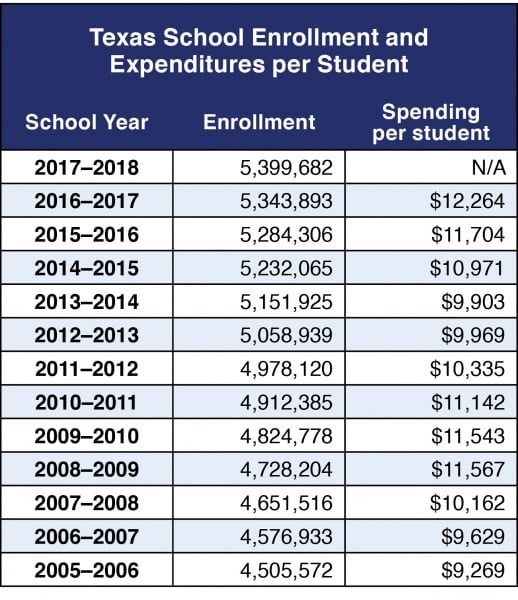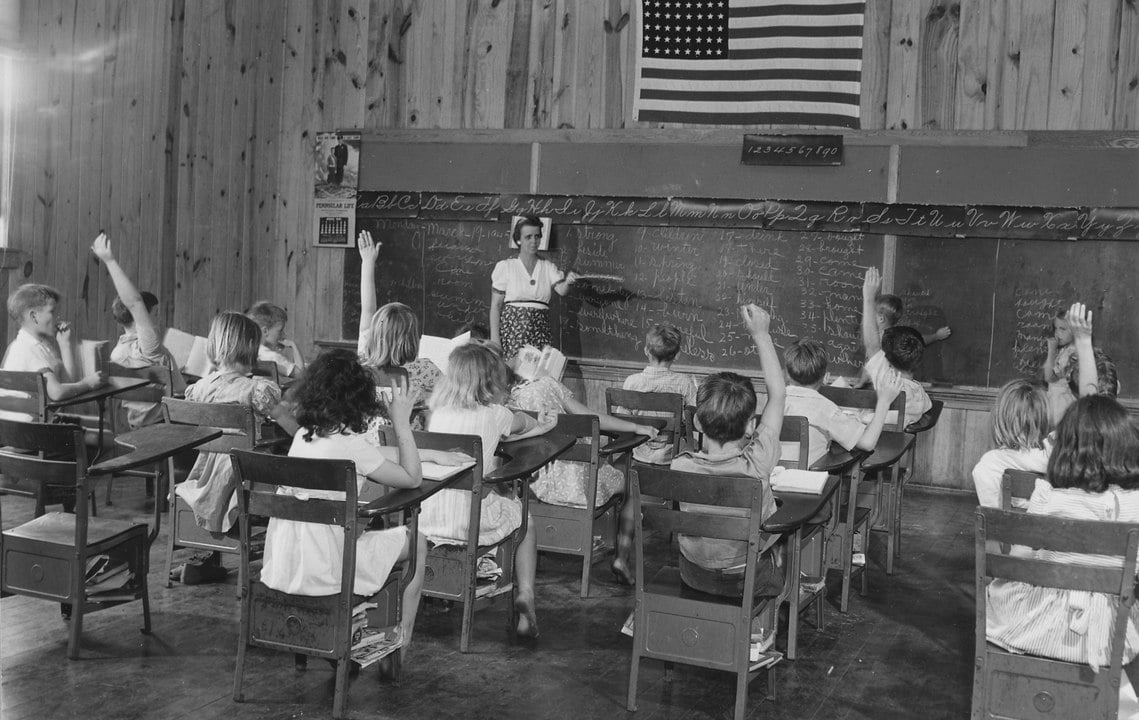Public education will probably always be a hot button issue in Texas as parents, teachers, lawmakers, and even the students themselves continue to seek ways to improve our schools. Many residents believe that despite the overall wealth of the state, inadequate attention and finances are directed toward the public education system. Among the problems commonly cited are flaws in the school financing system, relatively low teacher salary, poor test performance by students, debate regarding assessing student and school performance, dropouts from traditional schools in favor of charter schools or other alternatives, gun violence, and mental health issues.
Funding Problems
 |
Funding problems for Texas public schools can be traced to the state’s tax system, including a lack of income taxes and a combined state-and-local tax rate that places Texas 46th among the 50 states. Local property taxes and general state revenue together make up the revenue sources for Texas public schools. Between 2008 and 2018, the state revenue stream for schools declined by 12.6 percent while the student population simultaneously increased by 13.7 percent.
In 2019 the 86th Legislature passed HB 3, a sweeping change to school financing. The measure increases per-student funding, funds full-day pre-K for eligible 4-year-olds, and includes money for raises for teachers.
Performance Evaluations
In 2018, the TEA instituted a new “A–F accountability system” for grading the performance of public schools. In this system, 70 percent of a school’s grade is based on assessments of student achievement or school progress during the previous year (whichever is greater) and 30 percent is based on closing gaps among students from different subgroups (related to poverty, race, or special education). Student assessment within this system is based largely on their performance on the State of Texas Assessments of Academic Readiness (STAAR) tests for reading, writing, mathematics, science, and social studies, which were first implemented in 2012.
Supporters maintain that this A–F system is more transparent, easier for the public to understand, and more likely to prompt needed policy changes among lawmakers, compared with the previous school assessment system. However, the new system is opposed by many public-school administrators as an overly simplistic way of viewing school conditions and challenges, with too much emphasis on time-consuming standardized testing. The Texas Association of School Administrators has urged the legislature to roll back much of the standardized state assessment system in favor of more control over school assessment by the local districts.
Standardized testing has long been unpopular among Texans. According to a 2017 poll by the University of Texas and The Texas Tribune, most Texans believe that reducing the number of standardized tests is the best way to improve public education. The poll respondents believed this option to likely be more effective than increasing funding, raising teacher salaries, grading schools, expanding early childhood (pre-K) education, or using charter schools.
Public School Alternatives
According to TEA statistics available on the “Public School Explorer” website of The Texas Tribune in 2019, more than 50 percent of students are considered to be at risk for dropping out of public school. Reasons for this risk include being economically disadvantaged and having limited proficiency in English. Language is a crucial issue in Texas, where the majority (52.4 percent) of students are Hispanic, many from families in which English is not spoken at home.
Some Texans view charter schools or homeschooling as preferable alternatives to traditional public schools, especially for students at high risk for dropping out. Teacher unions generally oppose charters as being worse than traditional schools for both students and teachers. In February 2019, Louis Malfaro, president of the Texas American Federation of Teachers, argued that the expansion of charters poses a serious threat to the quality of public education, including greater discrimination against certain students, less-qualified teachers, and cuts to traditional funding.
Violence, Mental Health
Other controversial matters in Texas public schools gun violence in schools revolves around tougher gun control measures and more support for students’ mental health. There have been calls for each school to have at least one mental health counselor, who would help students deal with such issues as gun violence, psychological struggles, and suicide risk. Various antigang measures have also been advocated.


